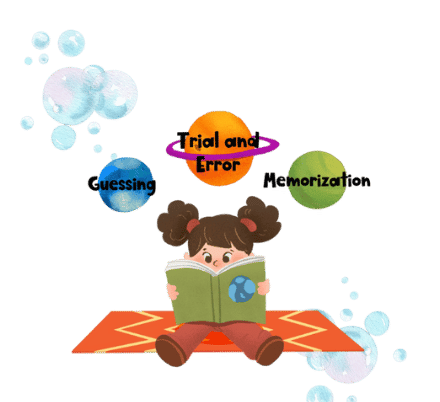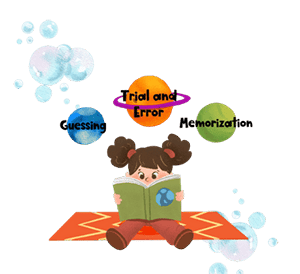Ways To Make Reading Skills Better

If you have a child with dyslexia or poor reading skills, you might be scratching your head wondering what went wrong. Perhaps you’re an avid reader. Or maybe you enjoy skimming articles and information online. Either way, you know how important strong reading skills are for all students, not just your child. But most likely, the steps needed to correct this problem have gotten murky…especially the older your child gets.

Dyslexia is a neurological condition that makes it difficult to read and spell. Although this is a huge problem, the bigger issue lies in the fact that kids with dyslexia are bright and usually quite verbal.
Wait a second, here. How can being verbal and smart be a hindrance?
The answer is simple Parents and educators expect more from kids with dyslexia than other kids with obvious special needs.
Because these kids are verbal, everyone assumes they have a strong grip on language skills, but nothing could be further from the truth. Oral language skills are second nature to most kids with dyslexia. The written word, on the other hand, is another story altogether.
The Vicious Cycle – Why It Rears Its Ugly Head
As means of survival, kids with dyslexia often engage in three bad reading habits called the Three Pillars of Poor Reading. These specific habits are guessing at words, memorizing words, and trial and error reading.

As a result,reading comprehension and fluency skills are directly affected…and not in a positive way. The root problem lies in the student’s poor decoding abilities.
Three main areas of strong reading skills exist: reading fluency, reading comprehension, and reading decoding. Although they are all three intertwined, decoding or sounding out words is the backbone of reading. Readers must have strategies for sounding out or decoding words they come across and don’t know if they are to be successful.
As previously mentioned, when decoding skills are weak, fluency and comprehension take a direct hit. The main reason for this is that weak or nonexistent decoding strategies force these kids into using bad reading habits – those three pillars of poor reading. They make poor, panic decisions instead of using decoding strategies and carefully sounding out words.
The vicious cycle continues, and the dyslexic reader falls further and further behind. Reading scores aren’t the only thing to suffer as grades in general drop. This is because reading carries over into all subject areas, even math.
Decoding Detective: How Sounding Out Words Makes All The Difference
Sadly, the neurological condition of dyslexia itself causes the three pillars of poor reading to occur. Because of how kids with dyslexia process information, decoding words is extremely difficult for them. And decoding – or sounding out words – is the backbone of strong reading skills.

Kids with dyslexia don’t just learn differently than other children; they think and process information differently. Because of this, the bit-by-bit process of decoding words is alien to their way of thinking. But don’t despair…that doesn’t mean kids with dyslexia can’t learn to decode!
Quite the contrary!
With the right set of tools, decoding skills soar. When a child’s “learning language” is spoken, great things can happen! But until that occurs, kids with dyslexia continue to engage in those three pesky bad reading habits.
Remember those three attributes of excellent reading skills? (fluency, comprehension, and decoding)
Unfortunately, in the bulk of schools, most of the “reading” attention goes to fluency and comprehension. This is a big mistake, as decoding is the starting point of it all and turns into the powerhouse of reading!
Once a reader has a basic reading foundation, schools usually stress reading fluency and comprehension instead of continuing to build the necessary decoding foundation. For kids with dyslexia, this is a catastrophic event! Children with dyslexia need more time spent on building that strong decoding foundation – in a way they can understand and internalize.
Decoding It The Right Way – The Side Of The Brain Matters
Did you know that most kids with dyslexia are right-brain dominant learners? Right-brain dominant learners learn by seeing the “whole” of something first then going back and breaking it down into pieces. They are also creative and learn through color, images, music, movement, and rhythm.

Do you see phonics on this list?
Nope; it refuses to rear its head on the right side of the brain..
That’s because phonics is a left-brain activity. So is bit-by-bit thinking, a crucially important skill for decoding – especially when it’s taught via traditional methodologies.
The process of decoding words step-by-step is counter intuitive to how a child with dyslexia learns and processes information. Kids with dyslexia use the right sides of their brains over the left hemispheres. This, in turn, makes it difficult to apply bit-by-bit thinking, a process necessary for strong decoding and reading skills.
In addition, since these kids are routinely taught to read and decode words through the use of traditional phonics methods, another left-brain activity, they resort to using shabby, panic-driven tactics to sound out or decode new words.
Traditional phonics methods (like flashcards and matching pictures to sounds) are like speaking a foreign language to kids with dyslexia!
Relying on bit-by-bit thinking and teaching through phonics (both left-brain activities) thrust the dyslexic child into panic-driven decisions and cause them to engage in poor reading habits, only one of which is trial and error reading.
Large Motor Movements And The Great Reading Debate!
A child with dyslexia can be perplexing. One minute, letter/sound combinations are strong, the next minute, it’s like the child has never been taught letter sounds at all! There are many reasons for this, but the main one is that not enough movement was used when trying to teach them letter/sound rules.

Children with dyslexia are hands-on or tactile learners. This means they need to move to learn, and the larger the movements, the more learning sets in for them. Matching and circling pictures to sounds doesn’t make sense to these kids. It simply doesn’t stick. Once again, phonics and traditional methods of teaching reading skills leave the child with dyslexia lacking because they don’t engage in large muscle movements.
It’s commonly thought that a child with dyslexia should use a multisensory approach to learning letter sounds and words. Although this is true, typical multisensory activities involve moving tiles with fingers, writing in sand, or molding letters out out of clay to learn letter sounds or other phonics rules.
Although these activities are a step in the right direction because these are multisensory (using hearing, vision, and movement), they clearly don’t involve enough large motor movement for a child with dyslexia to learn phonics rules for long term.
And sadly, these tactics are rarely used to teach decoding skills to the dyslexic child. Instead, kids are usually asked to memorize words with these methods, which only launches them into poor reading habits. (Memorization of words is too laborious, as we have over one million words in the English language).
Here’s the bottom line: kids with dyslexia rarely engage in sloppy decoding and reading practices when large motor movement activities are used as the primary means of teaching decoding skills.
Panic Sets in When Reading Skills are Weak
Have you ever lost your toddler in the park? Or has your puppy ever run off?

Panic sets in, and from there, fight or flight becomes the pilot in your plummeting airplane. It’s hard to remember much of anything. You can only focus on finding your puppy or toddler. And truth be told, if you were asked, you probably couldn’t even remember what color of shirt you dressed your darling in that morning or what color your puppy’s collar is.
Once panic sets in, it’s hard to engage in any kind of strategy.
A child with dyslexia often feels this horrible panic when coming across a new or unfamiliar word because existing strategies are weak. Sometimes, embarrassment is added to the mix, especially when your child is asked to read out loud in front of the class.
Fight or flight takes over, and the process of decoding the word becomes nearly impossible. Guessing at the word, desperately trying to recall words from memory, or randomly applying rules becomes the norm.
These three bad reading habits set in further and further. Reading scores plummet as grades drop.
Here’s the good news: like any habit, positive changes can take place in as little as three weeks.
Here’s the bad news: if you do nothing…then nothing happens!
Explaining It Now: Trial And Error Reading
Trial and error reading remains the most difficult and trickiest bad reading habit to treat and correct. When kids with dyslexia engage in this tactic, it’s like pouring gasoline on a flaming fire.

This bad habit is when kids – usually those with dyslexia – randomly apply reading rules to words as they decode. Random is the key word here. When a child learns a reading rule, it is usually internalized and applied most of the time in the right situation. This leads to strong reading skills.
But since trial and error reading is random, kids arbitrarily apply rules to new and unfamiliar words.
Sometimes it works; sometimes it doesn’t.
The biggest problem occurs when trial and error reading does work, though. Kids get a false sense of success and go about their decoding lives desperately applying the rule here and there…and everywhere. Because of the small reading successes that happened somewhere along the way, kids lock into more and more trial and error reading.
Add in guessing and memorizing words, and sloppy decoding and reading skills are formed.
Chaos ensues and continues, harming reading skills in a big way.
Fixing Bad Habits: It’s Not What You’d Think
So…how do you fix trial and error reading?

It’s really not hard if the right tools are used. To be firm, it’s better to net let these bad reading habits form in the first place and provide dyslexic children with the right reading tools from the start! But if these bad reading habits are interfering with reading success, know that they can be corrected!
Following are six tips to help your child correct this pesky reading problem!
1. Try to provide “non-phonics” based strategies for sounding out and decoding words. Kids who struggle to read don’t connect with traditional phonics-based instruction and must have strategies in place to decode words. They desperately need an Orton-Gillingham (or similar) approach to decoding words that’s predictable and uses phonemes as the basis of instruction to build strong reading skills.
Letter Sounds are Important!
2. Make sure that all letter sounds are strong. This includes all consonants along with long and short vowel sounds. (Check out the FREE Bravo! Reading Dyslexia Test for a quick way to find out). Most kids with dyslexia struggle with vowels in general, so when they come across vowels when decoding, they will often either guess at the word or apply trial and error reading rules to it. Sometimes it works; sometimes it doesn’t. A quick, affordable way to ensure letter sounds are strong is the Bravo! Beginner.

3. Provide large motor movement activities while teaching decoding and reading skills. As odd as this sounds, movement is a strong necessity for teaching decoding skills to poor readers or those with learning issues. Most kids who struggle are tactile or hands-on learners and require large motor movement to learn. This means that as the reader decodes or sounds out a word, large motor movement is involved a the same time, such as using a dot dabber or fat marker. (For two great free resources to get you going, check out the Bravo! Punch Pack and the Bravo! Snap Pack.)
A Perfect Scenario: Two Copies of the Same Text
4. Find a reading passage that’s easy for the reader and make two copies of it. Both of you and your child will read along at the same time – slowly and succinctly. As your child tries to engage in trial and error reading, you’ll automatically decode in the proper method, which is a fantastic way to model correct reading skills as well!
5. Make sure you gently correct any reading mistakes as they are made. This means you’ll have to listen along actively as your child reads and bring attention to the mistake. Be careful here, though. Kids with dyslexia are very sensitive, so be sure to use care, as they can shut down easily if the word is corrected with a brash, harsh tone. But letting a child incorrectly decode words only sets in the incorrect reading skill and causes problems down the road.

6. Ensure that your dyslexic reader can sound out two-letter words with ease before moving on to more difficult words. This is one of the biggest mistakes traditional reading programs make when it comes to helping kids with dyslexia read. When a child with dyslexia, who has limited visual and auditory memory skills is asked to sound out a three-letter word when two-letter decoding is weak, a huge foundational step is missed! This leads to trial and error reading, as well as other sloppy reading skills. (The Bravo! Snap Pack, a free resource can help with this!)
Trial-and-error reading is a bothersome problem, but with these five methods of correcting it, your poor reader is on the way to reading success!


